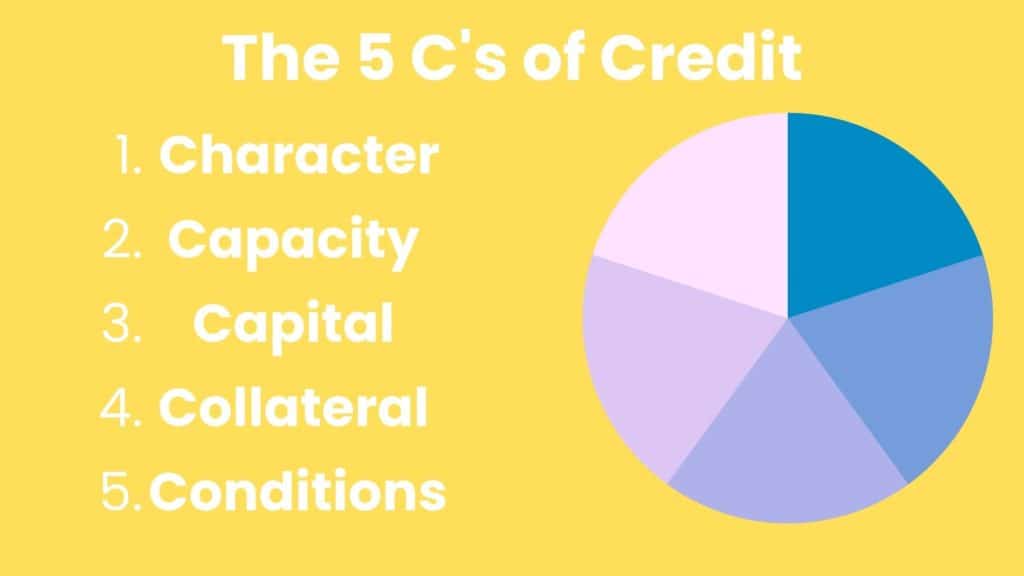What Is Underwriting?
Buying a home is a huge commitment’s for you and the lender. With the amount of money involved the lender has to make sure that you are able to repay the loan on time. Underwriting is the process the lender uses to determine if you can repay the loan. The mortgage underwriting process is a process where the lender reviews your application, assets, credit, and income.
What is Mortgage Underwriting?
Mortgage underwriting is the process where the lender reviews your financial background and determines if you are an acceptable risk. They will search your documents to determine if you are qualified and also look for any potential red flags.
The underwriter will review the documents related to your credit, income, and assets. They will also review documents related to the property like the appraisal and the title history.
What is a mortgage underwriter?
Underwriters are financial experts who work for a mortgage lender, and their job is to approve loans. A mortgage underwriter is a detail-oriented person, and their job is to make sure that you are a good risk for the lender to take. Underwriters have multiple loans they are working on at one time.
What does a mortgage underwriter do?
The job of the underwriter is to evaluate your mortgage application, financial history, and the property you are buying to determine if they meet the lender’s lending guidelines.
Mortgage lending guidelines are provided by :
- FannieMae
- FreddieMac
- The Department of Veterans Affairs
- The Department of Housing and Urban Development
- United States Department of Agriculture
Most lenders will follow the guidelines set forth by these agencies, but they may include overlays. Overlays are requirements that are above and beyond what the agencies require.
Every lender uses an Automated Underwriting System to determine if you will receive an automated approval.
If you don’t receive an automated approval, your loan will either be denied or you’ll have to go through manual underwriting.

The underwriter is going to look at the 5 C’s to determine if you qualify:
1.Character
The character portions of the underwriting process are about your credit history. The underwriter is going to look at your reputation for paying back your debts. This information is found from the Tri-Merged credit report your loan officer pulls while taking your application.
The credit bureaus, Experian, Equifax, and Transunion will also produce a score that provides a quick glance for the lender to know how well you repay your debt. When you are getting a mortgage this will be your mortgage FICO scores.
Your report will also contain items like collection accounts and bankruptcies. The information on your credit report remains for 7 to 10 years.
The better you are at repaying your debts, keeping your balances low, and not aggressively shopping for new credit, the higher your score is going to be.
The better your credit history, the less risk you present to the lender. Lenders will usually provide better terms for borrowing money to you if you are less risk to them.
2. Capacity
Your capacity is your ability to repay the loan by looking at your monthly income and your monthly debts. This is known as your debt-to-income ratio, and it helps the lender see how extended you are each month.
If you have a low DTI you’ll have an easier time qualifying for a mortgage, and you’ll also be approved for more. Most lenders have a DTI cap and the closer you get to that cap the riskier you are to the lender.
3. Capital
Your underwriter is also going to look at your capital which is your “skin in the game.” Your down payment is a factor in determining the risk of your loan. Low-down payment loans are among the riskiest types of mortgages for lenders.
This doesn’t mean you can’t get a mortgage with a lower down payment, but the process will be more thorough. It’s also one of the reasons why government-backed agencies insure the loan for lenders to protect them in the event you default.
Your down payment will affect your interest rate and mortgage insurance, which affects your monthly payment.
4. Collateral
Collateral is something that helps to secure the loan. When a lender has collateral, it makes lending less risky because they have something to collect should you default. With a mortgage, the collateral is your home.
This is why mortgages are often viewed as less risky because they are secured by a home that isn’t going to move. Secured or collateralized loans are usually easier to get than unsecured loans.
5. Conditions
Conditions are about the reason the loan is being requested. When applying for a mortgage the reason is simple, you want the loan to purchase a home. The underwriter’s goal is to make a good decision, one that puts the lender in the least risky position.
A primary residence is going to be less risky to a lender than a second home or an investment property.
Understanding the Mortgage Underwriting Process
Understanding the underwriting process will help you know what to expect next, and keep the anxiety at bay. It’s important to know that the underwriting process takes time, and much of it depends on multiple parties.
Get Pre-Approved
Your first step in the underwriting process is the mortgage pre-approval. This part of the process is done by a loan officer. While loan officers are not underwriters, if you are working with a good one they will think like an underwriter.
Initial Underwrite
Once you go under contract on a home, the initial underwriting process will begin. During this time the underwriter is reviewing your application, credit, income, and assets.
They will review your loan to ensure you meet the guidelines of the program you are applying for. Each program has set requirements on what documents must be submitted with the loan, and what those documents should have.
If the underwriter sees any documents that don’t meet the guidelines or any potential red flags they will request clarification from you.
Conditional Approval
Once the underwriter has made the decision to approve your loan, they will issue what’s called conditional approval. The conditional approval contained any follow-up items you need, an explanation the underwriter asks for, and conditions for the appraisal and tile.
It’s extremely rare that someone gets final approval from the initial underwriting. This is because you usually won’t have your appraisal or title work in, and there will be at least a few items the underwriter wants that weren’t provided.
Collect and Submit Conditions
This part of the underwriting process is the most critical. The amount of time it takes to get the conditions requested by the underwriter will determine how quickly your loan can close.
It’s also important to note that some underwriters will not review any of your conditions until all of them are provided. While we try to work with lenders who allow us to submit conditions as we receive them it’s not always possible.
Receive Final Mortgage Approval
Once all conditions are uploaded, reviewed, and approved, you will receive your final mortgage approval. This means the underwriter no longer needs any documents from you.
This process is also known as CTC, or Clear to Close. Once your final approval is issued your loan officer and their team will begin to coordinate your closing.
Important Note: Do not get new credit, spend any large amounts of money, quit your job or anything that affects your credit, income or assets until you have the keys to your house. There are checks and fraud systems that check these items right before closing, so even once you have final approval your loan can still be denied if you do one of these things.
How Long Does The Underwriting Process Take?
The amount of time it takes to close your loan will depend on a few different factors:
- How risky your application is
- How quickly you provide documents
- The turn times of your lender
- Appraisal
- Title work
- Insurance Binders
There are multiple parties involved in buying a house and closing the loan. The typical turn times for underwriters range from 1 to 7 days, with most averaging about 2 days.
Appraisals can take between 1 to 4 weeks depending on how busy the market is and the location of the home you are buying.
You can usually purchase a home in about 30 days from the time you go under contract.
Documents Needed for Mortgage Underwriting
While there are some standard documents that are needed for the mortgage underwriting process, you should also know that the underwriter can ask for additional documents.
Documents required by mortgage underwriting:
- Paystubs
- Tax Returns
- Financial Statements
- Driver’s License
- Verification of Rent
- W2’s
- Profit and Loss Statements
- Child Support Documents
- Divorce Decrees
- Social Security Award Letters
- Letter of Explanation
Everyone has a different situation so while these documents won’t be required by everyone, this also isn’t a complete list. You are going to have to prove your income, your funds for closing, and your credit. There could be multiple documents needed to do that.
Tips To Get Through Underwriting Quickly
- Be honest about your finances: The mortgage process is designed to weed out any discrepancies on your mortgage application. The number one way to make sure your home loan process is a disaster is to not be 100% truthful with your loan officer.
I wish I didn’t even have to write this, but it happens so frequently that it must be said. Tell your loan officer the truth. They are here to help you and keep you out of jail.
- Don’t Apply for New Credit: The minute you decide to get pre-approved, implement a self-imposed credit freeze. Don’t shop for credit cards, cars, or finance anything until you are moving into your house.
Each time you apply for new credit the lender gets an alert, and best case you have to provide more documents, worst case your loan gets denied because your debt-to-income ratio is too high.
- Don’t Make Money Transfers or Deposits: Whatever accounts you are using for your down payment shouldn’t be touched. When you move money or receive money, the underwriter will require a paper trail for all of those funds. You’ll be required to provide additional statements and other documents to prove where the money came from.
Your normal direct deposits from your employer are fine, but any other deposits will be looked at, and you’ll have to prove where they came from, which isn’t always easy to do.
- Don’t Change Jobs: If you plan on changing jobs you need to let your loan officer know before you go under contract on a home. When you change jobs you have to provide 30 days of pay stubs from the new job which will delay your closing and possibly cause you to lose the home.
- Answer Questions Quickly: If you loan officer is asking a question about your application, it’s important to communicate quickly and honestly. The question is most likely coming from your underwriter, and your loan officer needs a response to provide them.
- Provide Documents Quickly: Like questions, if there are documents that are being requested speed is key. Since most underwriters only review documents when they have received all of them, any delay in receiving them will likely delay your closing.
As a general rule, you should be able to provide most documents the underwriter requests within 48 hours.
Working with someone who has your back, knows what they are doing, and has your best interest is the key to a smooth home buying process.














